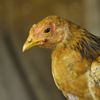I've written an as-yet-incomplete summary of some of my findings on the topic at "
Can Insects Feel Pain?" In particular, I have to take exception to this statement from the page you quoted initially: "Insects and other arthropods don't have any nociceptors." Here's an extended selection from "
A Question of Pain in Invertebrates" by Jane A. Smith:
Invertebrate Nociceptors
Some invertebrates, like vertebrates, also have special sensory receptors called nociceptors, which respond specifically to noxious stimulation. Such nociceptive nerve cells have been found in the segmental ganglia of the medicinal leech, Hirudo medicinalis (Nicholls and Baylot, 1968). Nerve impulses are generated in these cells, which Nicholls and Baylor called N cells, specifically in response to noxious mechanical stimulation, such as pinching, squeezing, or cutting of the body wall.
Modulation of Nociceptive Responses in Invertebrates
In mammals and other vertebrates, opioid substances (including enkephalins and endorphins) manufactured in the body can modify nervous transmission in nociception, producing analgesic effects. Administration of substances that mimic the effects of these endogenous opioids (i.e., administration of opiate agonists, such as morphine), also produces analgesia and thus may reduce or abolish behavioral responses to noxious stimuli. Furthermore, opiate antagonists such as naloxone may suppress these analgesic effects. Recent investigations have shown that similar opiate systems may have a functional role in invertebrate nociception (Fiorito, 1986; Kavaliers, 1988).
Enkephalin and b-endorphin-like substances have been found in earthworms (Alumets et al., 1979), and injections of nalaxone have been shown to inhibit the worms' touch-induced escape responses (Gesser and Larsson, 1986), suggesting that the opioid substances may play a role in sensory modulation. Opiate binding sites, with properties similar to those of mammalian opiate receptors, have been shown to be present in the neural tissue of the marine mollusk Mytilus edulis (Kavaliers et al., 1985). Kavaliers et al. (1983, 1985) have shown that administration of low doses of the opioid peptides methionine-enkephalin and b-endorphin produces "analgesic" effects in terrestrial snails of the species Cepaea nemoralis and that morphine has a similar effect. All three substances increase the time taken for the snails to respond by foot-lifting when placed on a 40 C hot plate. Furthermore, naloxone has been found to abolish the effect of morphine, and all of the effects were dose-dependent.
Enkephalin-like substances and their receptors have also been found in insects (Stefano and Scharrer, 1981; EI-Salhy et al., 1983), and opiate agonists and antagonists have been shown to modulate nociceptive-type responses in several species of arthropod, including mantis shrimps (Squilla mantis) (Maldonado and Miralto, 1982), honeybees (Nfinez et al., 1983), and praying mantes (Zabala et al., 1984.
As I noted in
this relevant piece:
As Smith notes, "The well-being of invertebrates used for research is being taken increasingly seriously," with V.B. Wigglesworth, "Do Insects Feel Pain?", Antenna, suggesting that we should assume insects can suffer unless we have evidence proving otherwise. I would discourage this precautionary-principle approach in favor of a more conservative Bayesian expected-value approach, but it seems clear to me that it would be wrong to completely ignore the possibility of insect pain until we have more information.
From the expected-value standpoint, causing pain to a large number of insects is as bad as causing pain to a small number of animals known to be sentient. That said, it's not obvious to me that
eating insects is particularly harmful. Considering the number of insects you impact in other ways, the consequences for the small number you ingest seem potentially minor, especially if they're raised well. In particular, the pesticides sprayed on your other food products might kill vastly more (although
that's not obviously a bad thing in my mind, considering the general
harshness of life in the wild). I think cost is the main consideration: Eating insects seems potentially expensive, and perhaps that money
could have been donated to Vegan Outreach instead, preventing perhaps many years of suffering for each dollar saved on insect food?
To kill the insects painlessly, why not crush them as quickly as possible before ingestion? That said, freezing might be fairly humane if the cold shuts down pain sensors. Perhaps a quick Internet search would give you more insight into this topic than I have.
As far as being a lazy vegan, why not buy packaged food products that don't require cooking (that's what I do myself): canned beans and lentils, packaged tofu, and protein mixes? You can find lots more information by searching the web. For instance, I found this passage on
a Vegan Outreach page:
For those who prefer not to cook, there are a wide variety of packaged foods from which to choose: frozen dinners; canned and dehydrated soups, stews, and chilies; items of all sorts for quick and easy sandwiches like vegan dogs and burgers, deli slices, bacons, sausages, untuna and unchicken salads, and soy and rice cheeses; and delicious desserts including soy yogurts and ice creams.
Finally, I would suggest not letting the best be the enemy of the good. If it helps prevent you from giving up veganism, you might eat meat on occasion, perhaps especially products milk and beef that cause
much less direct animal suffering per kilogram. Also consider that, as far as preventing animal suffering, being vegan matters far, far less than something like
encouraging people to care about wild animals, donating to Vegan Outreach. I would spend my effort on those big-picture tasks and worry less about exactly what you're eating in the mean time.




